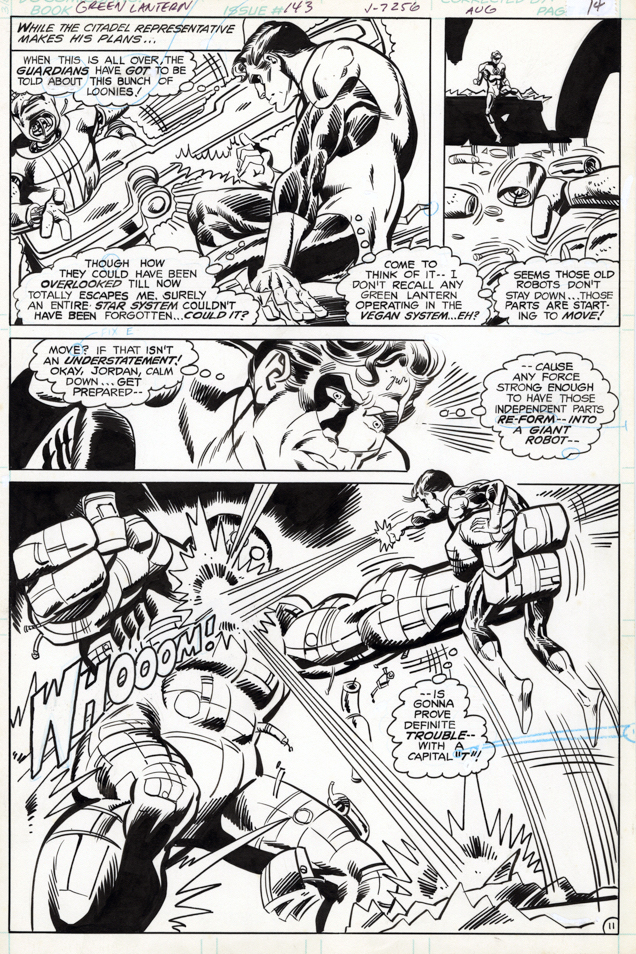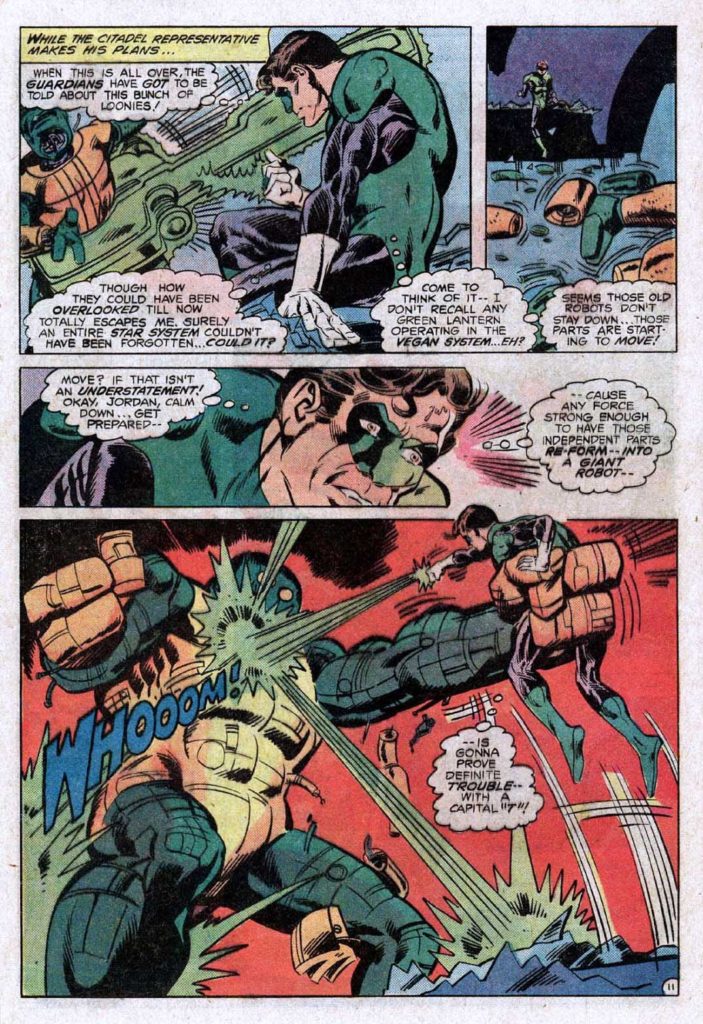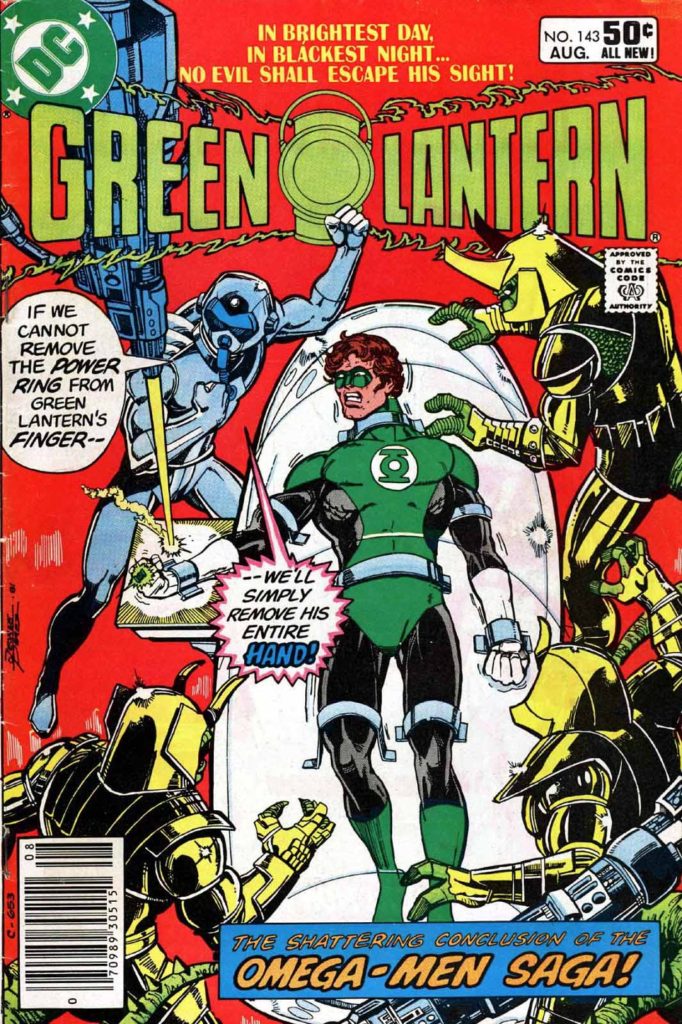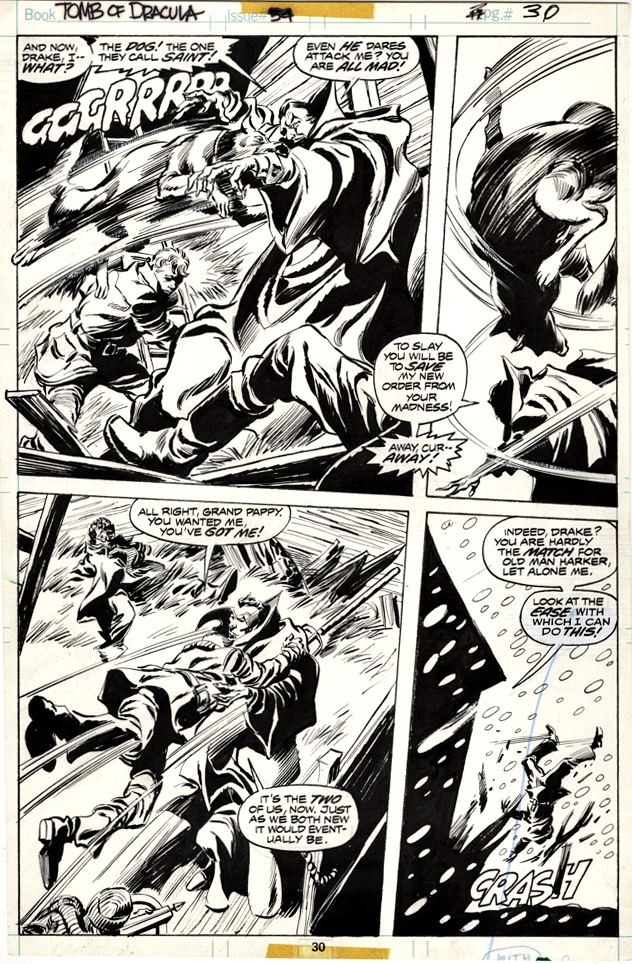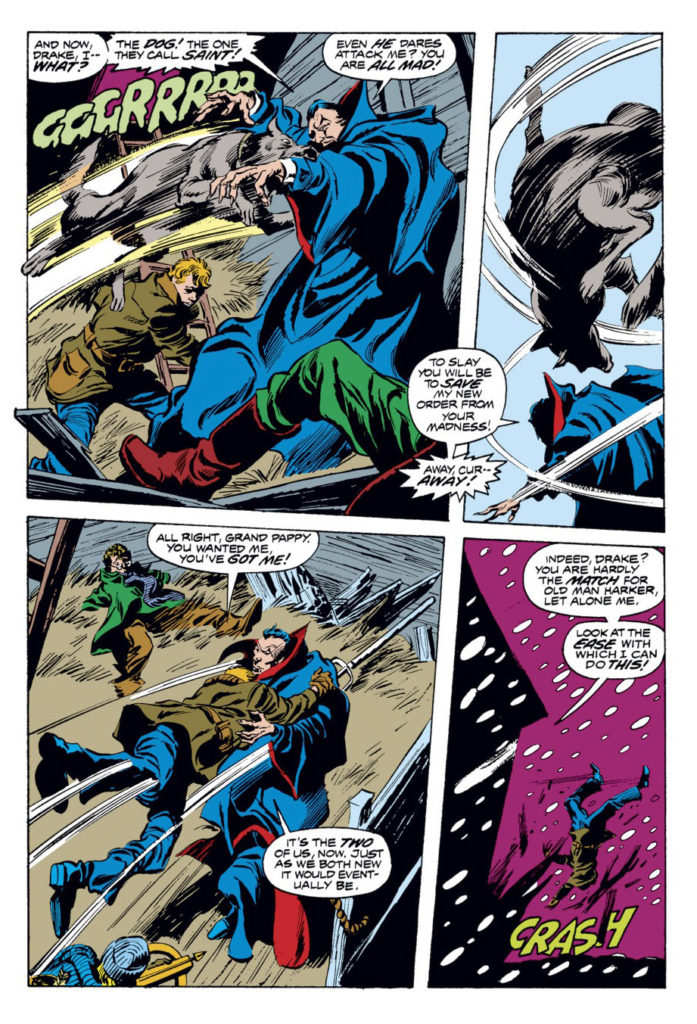Joe Staton — Green Energy
Green Lantern #143, August 1981
Continuing a celebration of Green Lantern’s anniversary this week.
Joe Staton somehow manages to channel a bit of Gil Kane and a bit of Neal Adams on this dynamic Green Lantern action sequence from 1981.
I first started following Joe’s work (with writer Nicola Cuti) on the quirky E-Man from Charlton back in 1973 1975. (Funny enough, it lasted 10 issues, and I kept all 10, which is unusual for me. Guess I really liked it.)
Shortly thereafter, he took over art duties on the Justice Society in All-Star Squadron, a book I also enjoyed.
This page is from Joe’s first run on Green lantern with writer Marv Wolfman, and this story introduces the extraterrestrial superheroes, Omega Men. Joe later returned on the Green Lantern Corps with writer Steve Englehart.
When conventions finally return (mid-late 2021 is my guess) make sure you visit Joe wherever —and whenever — you find him. He is truly one of the humblest and nicest creators in the business. And obviously, very talented.

